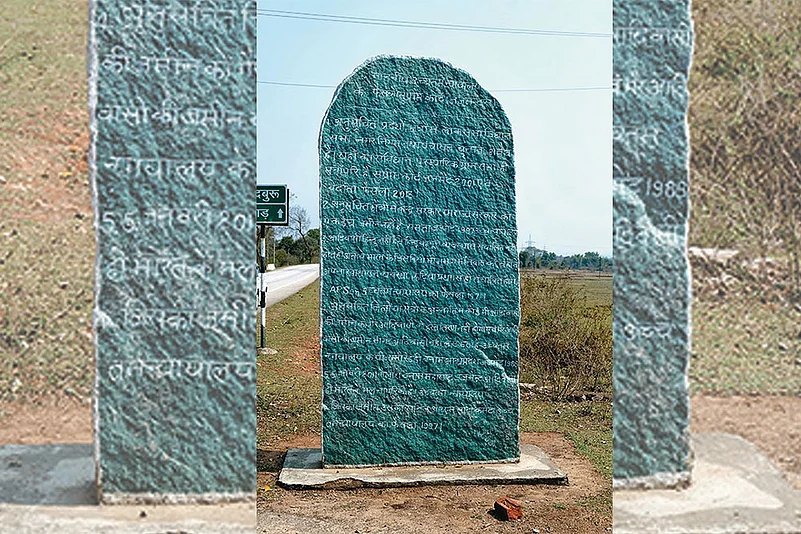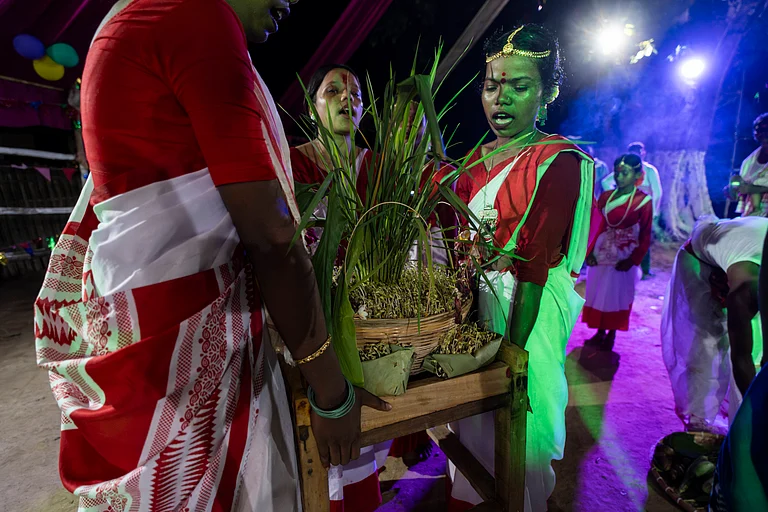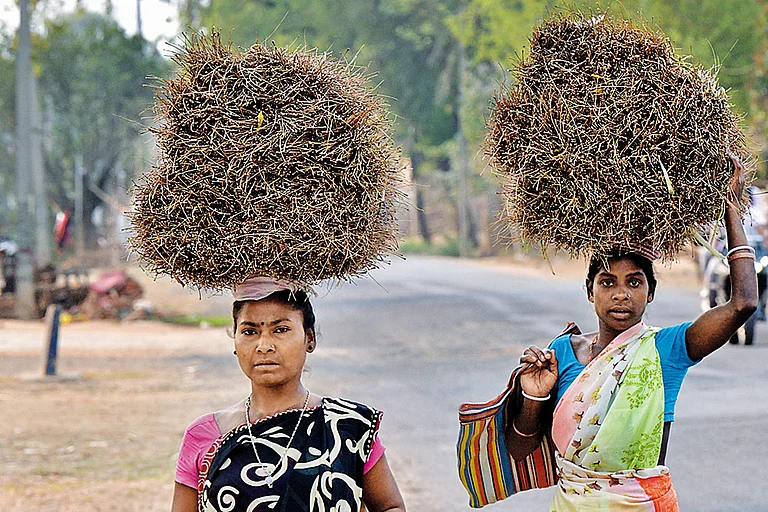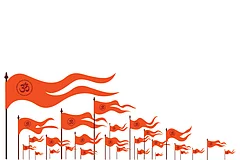To separate the Adivasi from his land is to stop his breathing. If you want to see an Adivasi’s extinction, take him away from his land—as it is happening at present.
—Author and tribal activist Ram Dayal Munda
The tribal people should be helped to grow according to their genius and tradition.
—Late Prime Minister Jawaharlal Nehru
We are the disciples and worshippers of tribals who made Lord Ram, Purushottam Ram.
—Prime Minister Narendra Modi
Adivasis were never Hindus and they never will be.
—Former Jharkhand Chief Minister Hemant Soren
Alongside the Jai Shri Ram slogan that has mobilised many Hindus and means victory of Lord Ram asserting the Hindu nation’s identity since the 1980s, yet another slogan, Jal, Jungle, Jameen, coined by Gond Adivasi leader Komaram Bheem much earlier, has been gaining prominence.
The “politics of indigeneity” has become stronger in recent times with the passing of the resolution in 2020 in Jharkhand to include Sarna, a separate religion of the indigenous people, in the Census. Former Jharkhand Chief Minister Hemant Soren was recently arrested over a land scam case by the Directorate of Enforcement. Soon after he became the chief minister in 2019, the first decision taken by his party was to drop the cases against the accused in the 2017-18 Pathalgadi movement.
A practice where Adivasis erect stone plaques to honour their dead was used to raise awareness about the provisions of the Panchayat (Extension to Scheduled Areas) Act (PESA) by inscribing the provisions of the Act on these plaques. It was an effort to empower people in the Fifth Schedule areas about their legal and constitutional rights. More than 75 FIRs were registered in Khunti against those who led the movement—almost 10,000 “unknowns”—under the BJP government for opposing the proposed amendments to the Chota Nagpur Tenancy (CNT) Act and the Santhal Parganas Tenancy (SPT) Act.
Soren has since become the face of the Adivasi rights movement and identity politics.
With protests happening across the country by the indigenous people demanding recognition of their economic, political and cultural rights, the old debate over appropriation of the Adivasi community by the Hindu nationalists and Christian missionaries has once again come to the forefront and now, with more rigour and force than before.
It was in the 1940s that the political right raised the issue of conversions by Christian missionaries and that led to the Niyogi Committee report, which banned the work of Christian missionaries in the Fifth Schedule areas like Jharkhand. That also paved the way for the RSS to form Vanvasi Kalyan Parishad in the early 1950s to mainstream the indigenous people and to the eventual acceptance of the RSS by the Adivasi community. Then came the ‘ghar vapasi’ campaign in the 1970s and 1980s to project an inclusive political Hindu nationalism.
Alongside, the movement by the Adivasi community against the hegemonic identity has gained prominence and the resistance movements have mobilised many across India. For instance, after the abrogation of Article 370 in J&K that led to the reorganising of the state into J&K (UT with legislature) and Ladakh (UT), there has been a growing demand in Ladakh by the people that the Centre must ensure that their culture, identity and land rights are secured in the face of an increasing thrust on development. Ladakhis are now demanding that Ladakh be declared a tribal area under the Sixth Schedule of the Constitution.
The scheduled tribes were first “notified” in 1950. Since then, they have been projected and seen as those who have low-literacy rates and are backward—a term that is often contested by the indigenous groups saying the so-called development has made them poorer and marginalised. They are also considered “primitive”, which is also being questioned by the community saying that confers on them a “savage-like” identity, a colonial construct, and not much has changed after Independence for them. The industrial development proposed, promoted and implemented by the BJP-led government now faces resistance from the indigenous people who are fighting for the right to self-determination of their cultural, social and religious systems that are not being recognised.
MORE FROM THIS ISSUE
This issue of Outlook looks at the politics of appropriation and resistance in the wake of recent developments in states like Jharkhand and in the UT of Ladakh. With the General Elections due this year, it remains to be seen how the Adivasis, who form more than eight per cent of the total population, participate, and how the identity politics shapes up in the future.
(This appeared in the print as 'Jal, Jungle, Jameen')




























